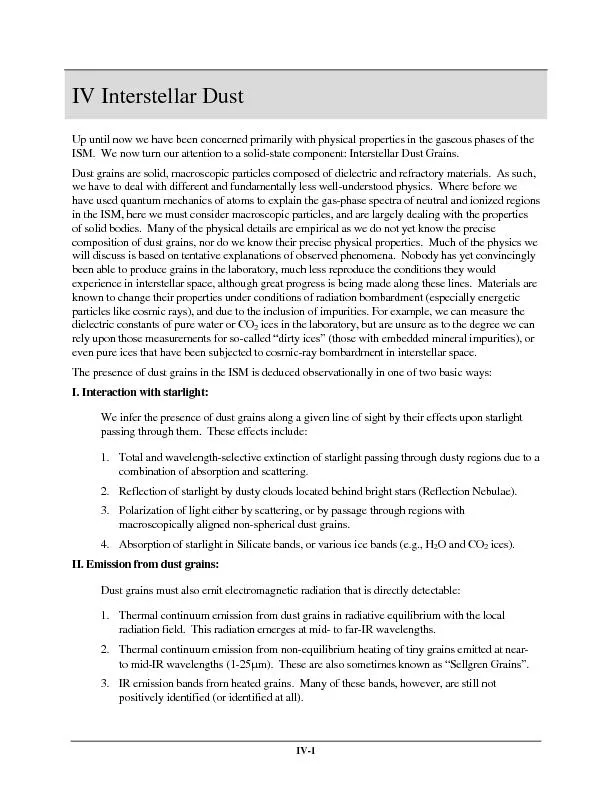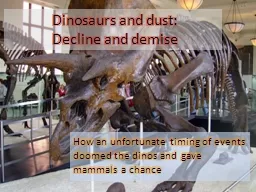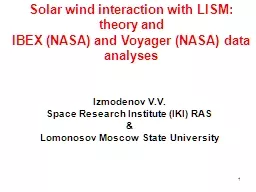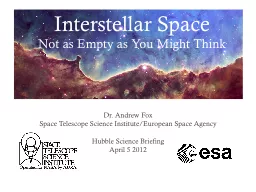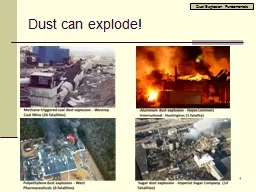PDF-Interstellar Dust
Author : alexa-scheidler | Published Date : 2016-04-30
IV1 d primarily with physicalISM We now turn our attention to a solidstate componen Interstellar Dust IV2 Radio continuum emission from rotating grains both electric
Presentation Embed Code
Download Presentation
Download Presentation The PPT/PDF document "Interstellar Dust" is the property of its rightful owner. Permission is granted to download and print the materials on this website for personal, non-commercial use only, and to display it on your personal computer provided you do not modify the materials and that you retain all copyright notices contained in the materials. By downloading content from our website, you accept the terms of this agreement.
Interstellar Dust: Transcript
Download Rules Of Document
"Interstellar Dust"The content belongs to its owner. You may download and print it for personal use, without modification, and keep all copyright notices. By downloading, you agree to these terms.
Related Documents

